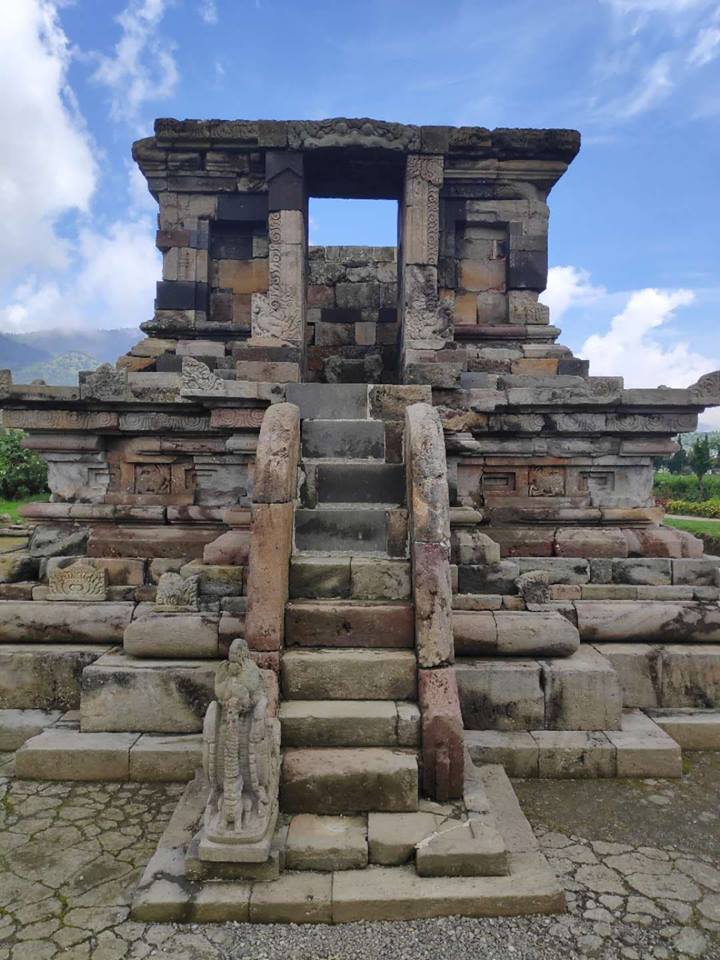This is the first of a trio of posts which will focus on lesser-known temples of the Dieng Plateau: Candi Setyaki, Candi Gatotkaca and Candi Bima. Located on the edge of the main Arjuna Complex, Candi Setyaki includes many of the same motifs and architectural features of its nearby cousins. However, with its wealth of stone-carving motifs, Setyaki is a particularly appealing example and is surely worth making the short detour to see.
Like most of the Dieng temples, Candi Setyaki was probably built during either the 8th or 9th centuries, making it one of the oldest Hindu shrines in the Indonesian archipelago. Like most of the Dieng temples, Setyaki is small and box-like compared to those on the Prambanan Plain, but things become more interesting once you start paying attention to small sculptural details. For instance, Setyaki has a frieze of unusual figures around the base, some of which are still crisply carved. The frieze features a woman in a squatting position who is dangling a pair of bells from thick chains. Her weighty ear-rings and necklace suggests she is of high birth.

Less unusual but also beautifully rendered are the kala-makhara arches which can be found over the main entrance and also the niches on the body of the temple. The kalas at Dieng are mostly jawless, featuring only the upper row of teeth. They are also noteworthy for their giant, bulging eyes which evoke the demonic nature of these beings. The example shown below is surrounded by a rich background of swirling foliage which gives a more abstract effect. Unfortunately, the statuary which would once have filled the niche has long since been lost.

Another kind of monster which is encountered at Candi Setyaki is the makhara, a kind of stylized sea-monster which is often found in the company of kalas. There is a particularly good example at Candi Setyaki, which is set at the base of the main entrance. It would originally have been one of a pair but its right-hand side counterpart is now missing. Nevertheless, its graceful shape and gaping mouth, which contains a smaller, lion-like monster, make it a memorable piece of statuary.

Candi Setyaki is not a complete structure. The roof of the temple is missing. However, there are still hundreds of unplaced stones which are being stored in the immediate vicinity, so further restorations seem possible. It is also clear that Setyaki also had several candi perwara or satellite temples. The base of one of these is in reasonable condition but the rest are completely ruinous. In terms of the main temple, it is estimated that 70% of the stones are original and the rest are modern replacements. Due to its sculptural detail, it is worth seeing even in its partially ruined state.
